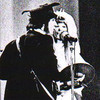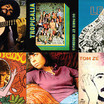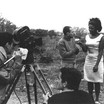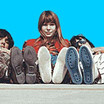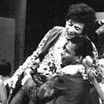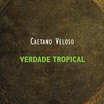Ruídos pulsativos

Musical Heirs
When I saw Caetano Veloso sing “Tropicália” on a TV show, one Sunday afternoon of the second term of 1967, it was the greatest thrill of discovery I had ever had facing a live manifestation of contemporary art (and the fact that it happened on television is part of the feeling of “live” happening). I was already an enthusiast of “Domingo no parque”, and I enjoyed “Alegria alegria”, even though the pop attitude imbedded in this song, with its mix of collage and simplification, didn’t seem to me to be able to go very far (today I recognize, however, that “Alegria alegria” is, among all the songs of that moment, the one that crosses time unblemished by dates).
Caetano’s record from December 67, with Rogério Duarte’s psychedelic cover, completely consolidated the feeling started with “Tropicália”. It was a mix of surprise and total recognition for someone who had come to São Paulo not long before, from a beach town (São Vicente), who lived the university environment with a sense of the world, and who found the existing mental habitat narrow in contrast to the shower of new realities that the times were bringing. Caetano and Gil became, not only to me, but to many people around me, a life and thought reference for a lifetime, because, among so many things, they expressed, and also transcended, the intensities of that unique moment.
The first relation between Tropicália and my artistic work is the twenty-year silence that spans my participation in the university festival of 1968 with the song “Outra viagem”, sung by Alaíde Costa, and my public return to music in the late 80’s. During that time, I got deeply involved with university life. I did my Masters and my PhD, I devoted myself to research and to essay writing, hiding, probably from myself, the music that, nonetheless, I had never stopped making. My essays dwell on criteria developed by the tropicalist experience and its unfolding. But, in music, the song itself had become, after the tropicalists, an event of such multiple dimensions that its mere assimilation in me demanded the corresponding time (in this case, twenty years is the minimum necessary for a slow receptor such as myself, who pays extreme, and perhaps even excessive, attention to everything).
I don’t recognize “elements” of the tropicalist aesthetics in my work; what I do recognize is a basic affinity that is permanent. Maybe that’s due to the fact that I am a paulista from the shore, from the working middle class, a Chopinian pianist formed in a province where there was also avant-garde music, and who likes to live with counterpoints, correspondences and differences.






